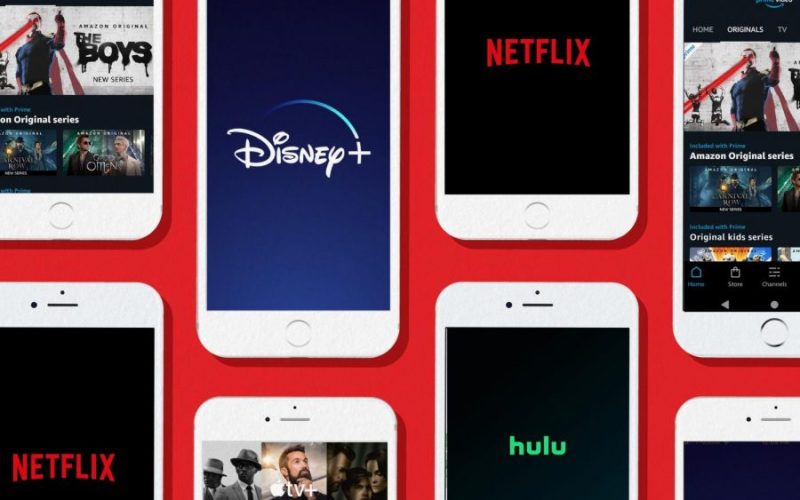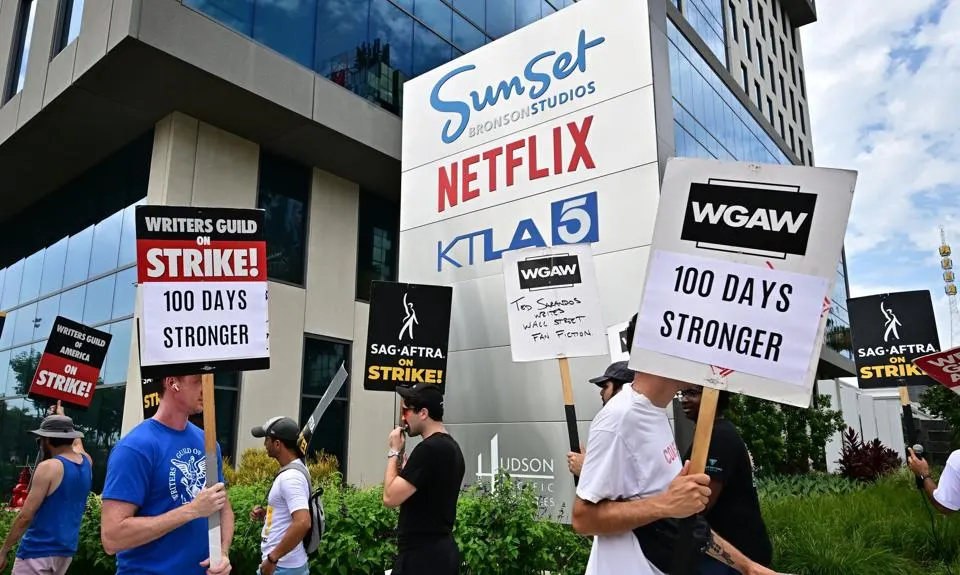Introduction
The advent of streaming services has marked a significant turning point in the movie industry, reshaping how films are produced, distributed, and consumed. This transformation has been driven by technological advancements and changing consumer preferences, leading to a new era in cinematic experiences. This article delves into the profound impact streaming services have had on the movie industry, highlighting the challenges and opportunities that have emerged in this digital age.
The Rise of Streaming Services

Streaming services have quickly become popular over the last decade. Big names like Netflix, Amazon Prime Video, Disney+, and Hulu are at the forefront of this trend. These platforms meet the growing demand for on-demand content. They offer subscribers a wide range of films and TV shows that can be accessed anytime and anywhere. This convenience and affordable subscription plans have led to many people adopting streaming services.
-
Emergence and Growth
The rise of streaming services began in the early 2000s, with YouTube and Netflix leading the way. Initially, Netflix was a DVD rental service, but when it switched to streaming in 2007, it changed everything. By 2020, streaming services had exploded in popularity. This growth was fueled by better technology, faster internet, and changing viewer habits.
-
User Behavior and Preferences
Today’s viewers prefer on-demand content. Busy lifestyles make it hard to watch shows at specific times, so people enjoy the ease of watching movies and series at home. Many like binge-watching entire seasons of shows and exploring various genres without worrying about TV schedules.
Changes in Film Production
-
Shift in Production Strategies
Streaming services have changed how films are made. They provide opportunities for filmmakers who may not get noticed by traditional studios. Platforms like Netflix and Amazon Prime Video invest heavily in original content, creating new films that focus on unique stories and diverse viewpoints.
-
Independent Filmmaking
Independent filmmakers have greatly benefited from streaming services. These platforms allow smaller productions to reach audiences worldwide without needing major studio support. This has led to more films covering niche topics, celebrating cultural diversity, and giving a voice to underrepresented groups.
| Aspect | Before Streaming | After Streaming |
|---|---|---|
| Production Budget | Higher costs, studio-driven | Flexible budgets, diverse funding sources |
| Distribution | Limited to theaters | Global reach via platforms |
| Audience Reach | Geographically constrained | Global audience accessibility |
| Genre Exploration | Risk-averse, familiar themes | Diverse genres, unique storytelling |
Impact on Movie Production

- Diverse Content Creation: Streaming services have changed how films are made. They provide a platform for a wide range of voices and stories. Unlike traditional studios that focus mainly on big blockbuster hits, streaming platforms invest in niche genres and international films. This allows them to cater to many tastes and preferences, offering something for everyone.
- Increased Investment: The competition among streaming services has led to more money being spent on original content. Companies are investing billions to create exclusive films and series. This attracts top talent from the industry and encourages new ideas in storytelling.
- Flexible Filmmaking: Filmmakers now have more creative freedom thanks to streaming platforms. These services often bypass the rules that traditional studios impose. This freedom lets filmmakers experiment with new formats and storytelling methods, enriching the overall film experience.
Distribution Revolution
-
New Distribution Models
Streaming services have disrupted the old ways of distributing films. Many films can now skip theaters altogether. This was especially clear during the COVID-19 pandemic, when many movies were released directly on streaming platforms. This shift has caused everyone to rethink how films are distributed and consumed.
-
Impact on Theatrical Releases
The impact on traditional theaters has been significant. While big blockbuster films still debut in theaters, many smaller and mid-budget films are now going straight to streaming. This raises questions about the future of cinemas as places for film viewing.
Impact on Distribution

- Global Reach: Streaming services have changed film distribution by making it possible to access films instantly from anywhere in the world. This global access helps films reach wider audiences without needing expensive marketing campaigns or physical copies.
- Simultaneous Releases: The old way of releasing films in stages is being challenged by streaming platforms, which often release films worldwide at the same time. This approach can reduce piracy and create a more unified marketing strategy.
- Data-Driven Decisions: Streaming services use data analytics to understand what viewers want. This helps them tailor content recommendations, ensuring higher engagement and satisfaction among their audience.
Impact on Movie Consumption

- Convenience and accessibility: Watching films on various devices, from smartphones to smart TVs, has made streaming very convenient. This easy access has changed how people watch films. Many now prefer to enjoy movies at home instead of going to theaters.
- Binge-Watching Culture: Streaming services have made binge-watching popular. Viewers often watch multiple episodes or films in one sitting. This trend influences how films and series are created, as many are designed to keep viewers interested for longer periods.
- Changing Viewing Habits: The rise of streaming has led to fewer people attending traditional cinemas. Audiences increasingly prefer the comfort of watching at home. This change has prompted theaters to innovate and enhance their viewing experiences to stay competitive
Globalization of Content
-
Expanding Global Reach
One of the biggest impacts of streaming services is the globalization of content. These platforms make it easier for international films and series to reach audiences everywhere. This increased access allows viewers to explore diverse cultures and storytelling methods that they might not have seen before. Films like “Parasite” and shows like “Money Heist” gained global popularity, showing how streaming services can elevate international productions.
-
Cultural Exchange and Diversity
The globalization of content promotes cultural exchange and enriches the viewing experience. Streaming services often showcase stories from various backgrounds and offer content in multiple languages. This diversity broadens viewers’ perspectives and encourages conversations about different societal issues, helping to create a more connected global community.
Changing Audience Behavior
Streaming services have changed how people watch movies and shows. Many viewers now prefer binge-watching, which means watching several episodes or movies in one go. This habit has created a culture where people consume content quickly. According to research by Nielsen, about 70% of viewers binge-watch. This way of watching helps people feel more connected to the stories and characters.
Streaming platforms also use data to improve the viewer experience. They analyze what viewers watch and recommend similar shows and movies. This personalized approach keeps people engaged and happy with the service. When viewers find content they love, they are more likely to keep coming back. This leads to greater loyalty to the platform.
Challenges and Opportunities

- Challenges for Traditional Cinema: The growth of streaming services presents significant challenges for traditional cinemas. They need to adapt to changing viewer preferences. Theaters are exploring new strategies, like offering premium experiences and exclusive screenings, to attract audiences.
- Opportunities for Collaboration: The relationship between streaming services and traditional studios is evolving. More studios are partnering with streaming platforms for co-productions and exclusive releases. This collaboration benefits both sides, leveraging the reach and resources of streaming services.
- Regulatory and ethical considerations: The dominance of a few major streaming services raises concerns about competition and content diversity. Regulators may need to step in to ensure a fair and diverse entertainment landscape.
Impact on Filmmaking
Streaming services have changed the way films are made. With many platforms competing for viewers, studios are investing more in original films to attract subscribers. Big names like Netflix and Amazon are creating high-quality movies that rival those from traditional studios. This means there are now more stories being told and a wider variety of viewpoints in films.
Additionally, streaming platforms make it easier for independent filmmakers to share their work. These creators can now reach audiences all over the world without relying on traditional methods of distribution. This change has allowed many unique voices to be heard and has led to exciting and innovative storytelling. As a result, viewers can enjoy a richer selection of films than ever before.
Financial Implications
-
Subscription-Based Revenue Model
The move from a pay-per-view model to a subscription-based system has major financial effects on the movie industry. While this model gives streaming platforms a steady income, it challenges traditional studios that depend on box office revenue.
-
Investment in Original Content
To keep subscribers interested, streaming services are investing heavily in original content. This competition for high-quality programming has led to bigger production budgets and more innovative storytelling, benefiting the overall quality of films and shows.
The Future of Streaming Services in the Movie Industry

-
Innovations in Content Delivery
Streaming services are changing how we watch movies. As technology improves, these platforms will likely offer new features. This includes interactive storytelling, where viewers can choose what happens next, and virtual reality (VR) or augmented reality (AR) experiences that let people feel like they are inside the movie. These innovations will make films more engaging and provide exciting ways to tell stories. To keep viewers interested, streaming services will invest in these technologies.
-
Enhanced Personalization and User Experience
The future of streaming will focus more on personalization. Using artificial intelligence and machine learning, these platforms will get better at suggesting movies and shows based on what viewers like. As users get used to these tailored experiences, they will expect platforms to offer content that matches their interests. This focus on personalized recommendations will create a better user experience. It can also help build loyalty, encouraging subscribers to check out more of the diverse content available.
Comparative Analysis: Streaming Services vs. Traditional Cinema
| Feature | Streaming Services | Traditional Cinema |
| Accessibility | Instant access from home | Limited to theater schedules |
| Content Variety | Vast libraries, including originals | Limited to what is currently screening |
| Revenue Model | Subscription and ad revenue | Box office and DVD sales |
| Viewer Engagement | Binge-watching and on-demand | Weekly or bi-weekly releases |
| Production Opportunities | Increased for indie filmmakers | Dominated by major studios |
| Global Distribution | Instant worldwide availability | Geographically limited |
Analysis of Streaming Services on the Movie Industry
| Aspect | Impact | Notes |
| Audience Reach | Increased global accessibility | Films can now be viewed by international audiences. |
| Revenue Streams | Diverse income sources | Subscription fees and advertisements supplement traditional revenues. |
| Viewing Habits | Shift toward binge-watching and convenience | Traditional movie-going is declining. |
| Original Content Production | Increased investment in unique storytelling | Streaming platforms are producing high-quality content. |
| Market Competition | Heightened competition among platforms | Increased pressure on traditional studios to adapt. |
Conclusion
Streaming services have a profound and varied impact on the movie industry. They are changing everything from how films are made to how people watch them. While there are challenges to face, the opportunities for innovation and growth are huge. As the industry evolves, everyone involved must navigate this new landscape, using the benefits of streaming while keeping the heart of traditional cinema alive. The future of the movie industry lies in finding a balance between these two worlds, ensuring a rich and diverse cinematic experience for audiences everywhere.











